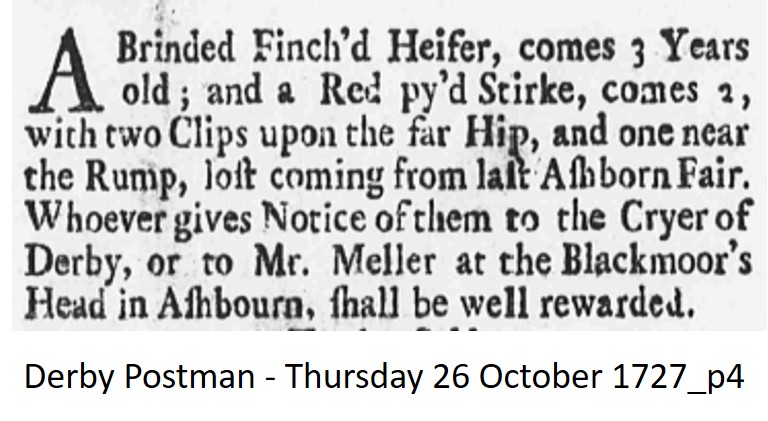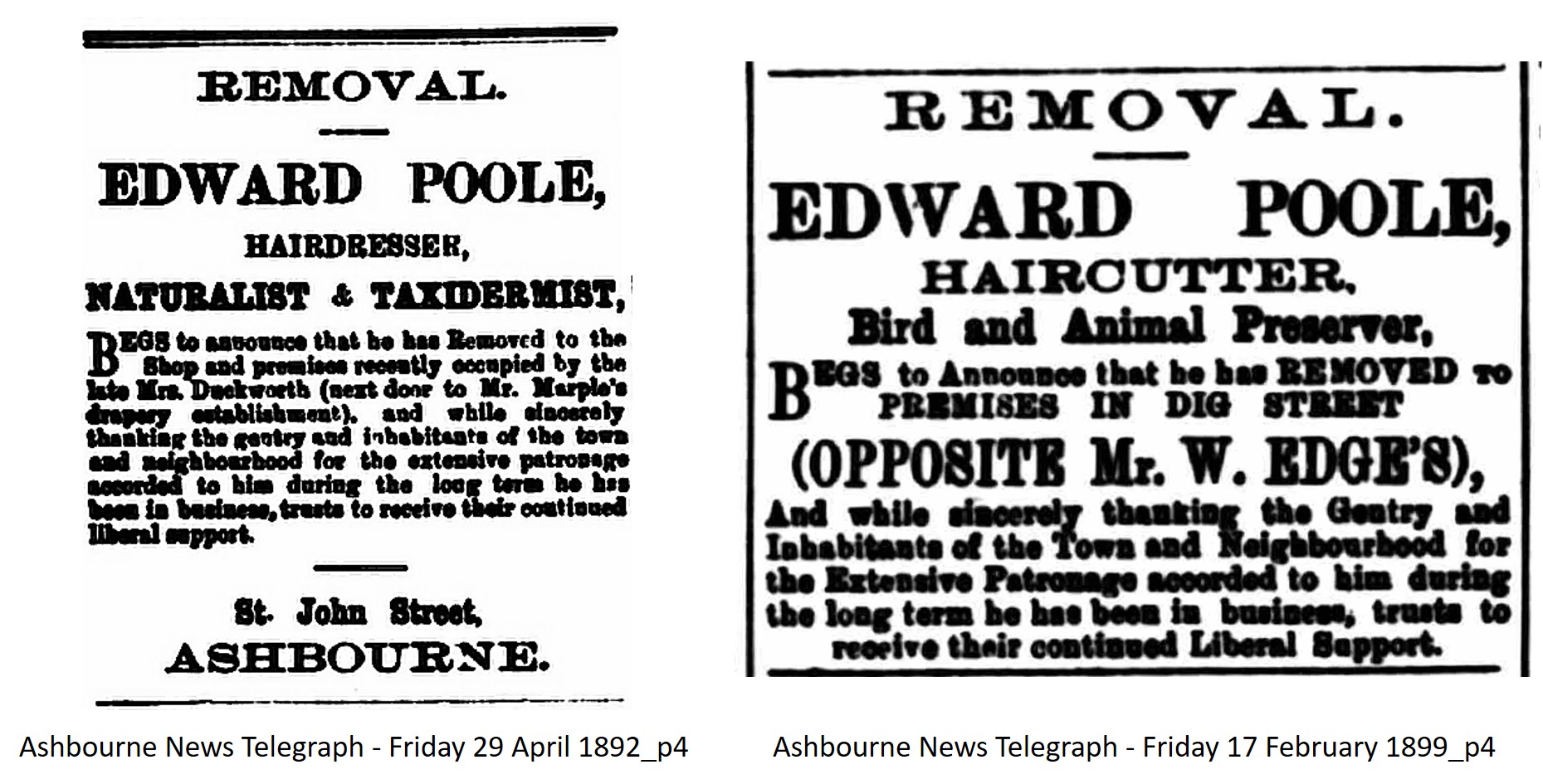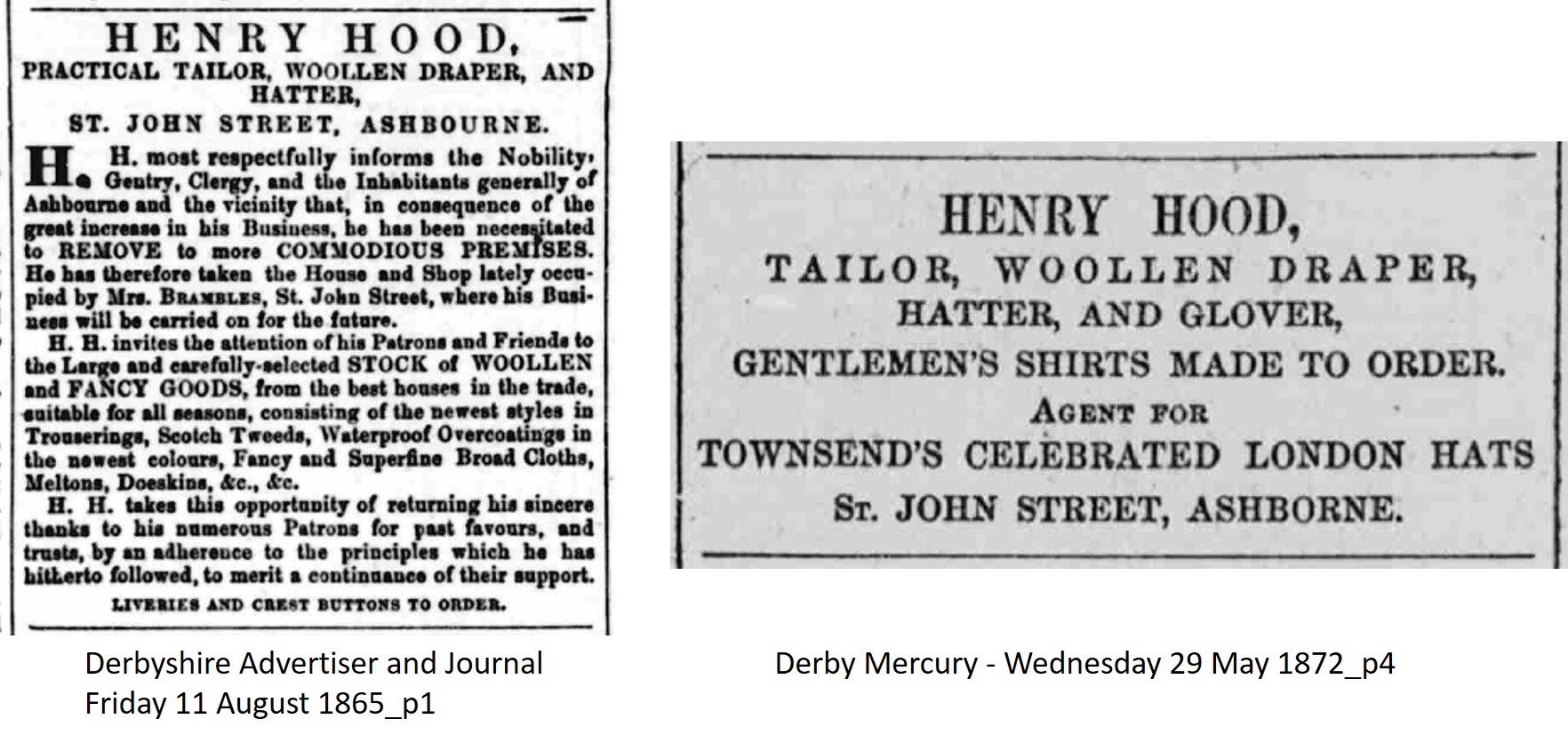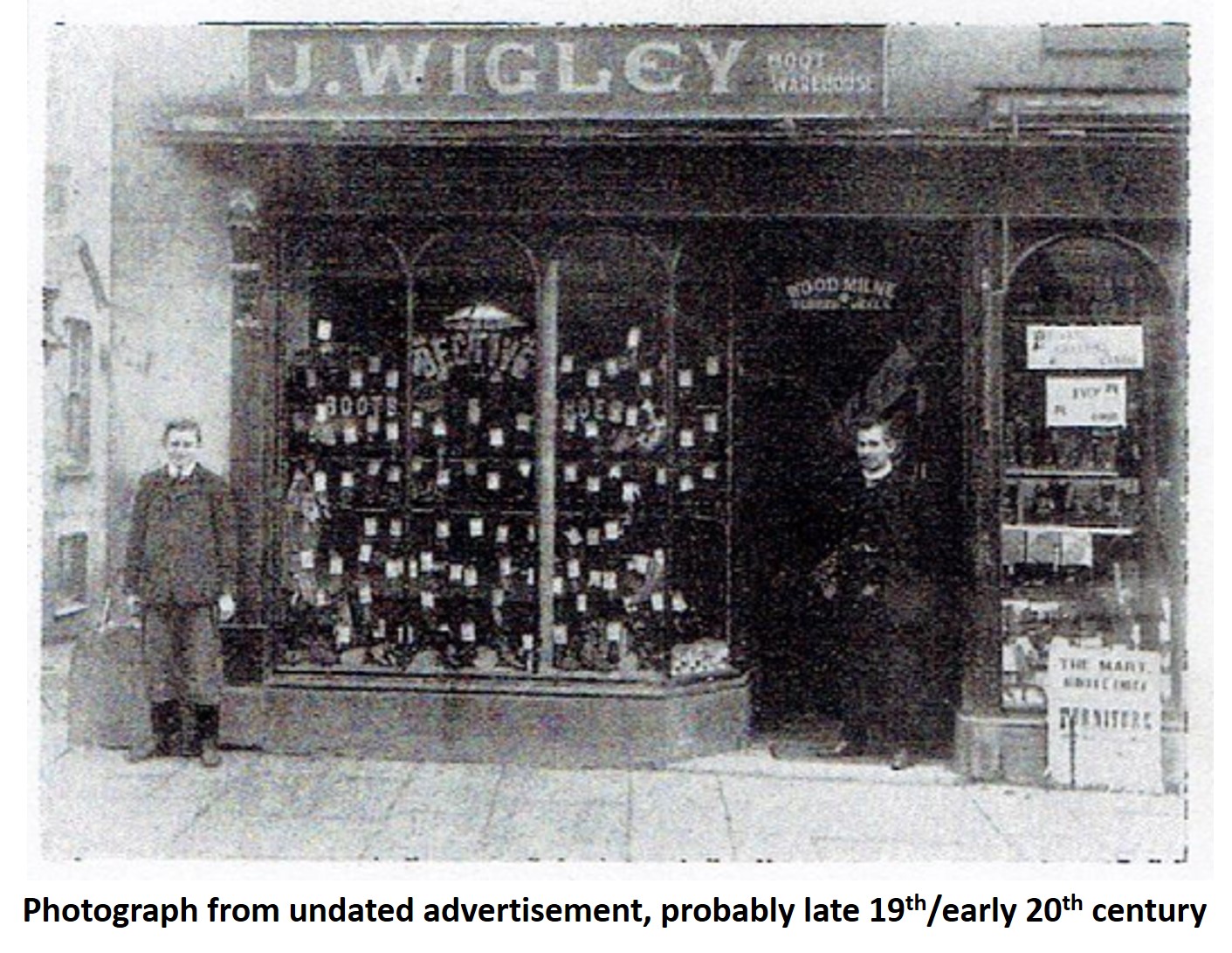
18-20 St John Street
Highlights
▪ Grade II listed part of former Blackamoor’s or Black’s Head Inn (14-20 St John St)
▪ Probably dates to the early-18th century
▪ Inn proprietors can be traced from 1758
▪ Ceased to be an inn in 1825 then split into two properties, 14-16 & 18-20
▪ 18-20 then occupied by drapers until c1863
▪ Split into two properties after c1863:
➢ 18 was occupied by Charles Hales’ printer and stationer, from c1900-56
➢ 20 was occupied by Wigley’s, the boot and shoe warehouse, from 1872
▪ From c1966, Wigley’s occupied 18-20
More information
18-20 St John St was built as one building with numbers 14-16 St John St. It is on the south side of the street between the Horse & Jockey yard (on the left/east side) and Hood’s Yard (on the right/west side).
The Building
The Grade 2 listings suggests that it is late-18th century but the Blackamoor’s (Black’s) Head Inn, as a name, goes back to the early 18th century. Built with bricks of similar size to the Green Man, the Blackamoor’s (Black’s)Head Inn was probably rebuilt no later than the mid-18th century.
18-20 St John St is stuccoed with moulded plaster eaves and has a tiled roof. It is three storeys high with three flat headed windows with boxed frames, sashes with glazing bars on the first and second floors. The ground floor shop front is late 19th century or early 20th century.
The History of its Occupation and Use
The earliest mention of the Blackamoor’s Head thus far found in newspapers dates to 1727 when Mr Meller/Mellor was the proprietor (see below). He would remain there until at least 1744.

A continuous series of proprietors can be traced from 1758 to 1825:
1758-74: James Davenport
1775-95: Charles Houghton and his wife Ann
1796-1807: WilliamHolyoak
1808-17: Roger Broadhurst
1818-19: Smith & Hall
1820-21: Tarbatt & Hall
1822-25: John Thompson
Land Tax records show that a Mr Davenport was the owner of 14-20 St John St 1780-89 and this is presumably James Davenport who had been the occupier/landlord unti l1774. From 1790-1825, the owner was Sir Brooke Boothby of Ashbourne Hall.
During the period when it was the Blackamoor’s/Black’s Head, it was a regular venue for auctions advertised in the Derby Mercury and it also hosted meetings of the trustees of two turnpike (toll) roads:
1) Derby to Ashbourne to Hurdloe House: 1784-1813. Derby to Ashbourne is the present day A52 and Ashbourne to Hurdloe House, now known asthe Bull i’ t’ Thorn, is the A515.
2) Ashbourne to Belper Openwood Gate & Belper to Ripley: 1790-1823. Ashbourne to Belper is the present day A517.
Sir Brooke Boothby passed away in 1824 and, subsequently, the building was sold and ceased to be an inn.
The purchaser was John Wood, proprietor of the Green Man, and by 1828 14-20 St John St had been split into three properties. Two fronting the street were occupied by Thomas Brittlebank, attorney (14-16 St John St) and Mr & Mrs Charles Hayward, draper (18-20 St John St) who had moved from 12 St John St. The third part, which consisted of the yard and stables at the back, were used by John Wood himself.
From hereon, 14-16 and 18-20 St John St are dealt with separately.
18-20 St John St:
Mr & Mrs Hayward did not stay long at 18-20 St John St, and in 1830 their business was bought out by Thomas Maysmor, also a draper, who remained on the premises until c1863.

After this the property was split into two:
18 St John St was occupied by a series of Berlin wool dealers and milliners: Sarah Leason from c1863 until at least 1871 and perhaps until 1876, Elizabeth Train and Miss Hood from at least 1881 until 1886, and Ann Sarah Duckworth from 1887 until 1891.

Edward Poole, hairdresser and taxidermist, followed 1892-99, and then Charles Hales’, printer and stationer, c1900-c1956 (see advertisements below). From the 1940s, Charles Hales’ business was run by John M. Winfield (see also below).

It is not clear who if anyone occupied 18 St John St 1957-65 but by 1966, John Wigley’s, the boot and shoe makers/dealers, had expanded to occupy the entire 18-20 St John St premises.
20 St John St was occupied by Henry Brambles, hosier, 1863-65 and then by Henry Hood, tailor, 1865-1872 before he moved to 10 St John St, Granby House. After this, John Wigley’s, boot and shoe makers/dealers started their long association with the property which continues to this day.



When John Wigley junior passed away in 1936, the business was purchased by Arthur Edgar Winstone who had been managing the business since 1904. When his son, Roger Winstone, passed away in 1976, the shoe shop was sold ultimately into the hands of James Baker which was part of the Clark’s group. After James Baker closed in 1988, Wigley’s was reopened by Roger Winstone’s daughter, Barbara.
© PaulThompson 2025
You may also be interested in...
